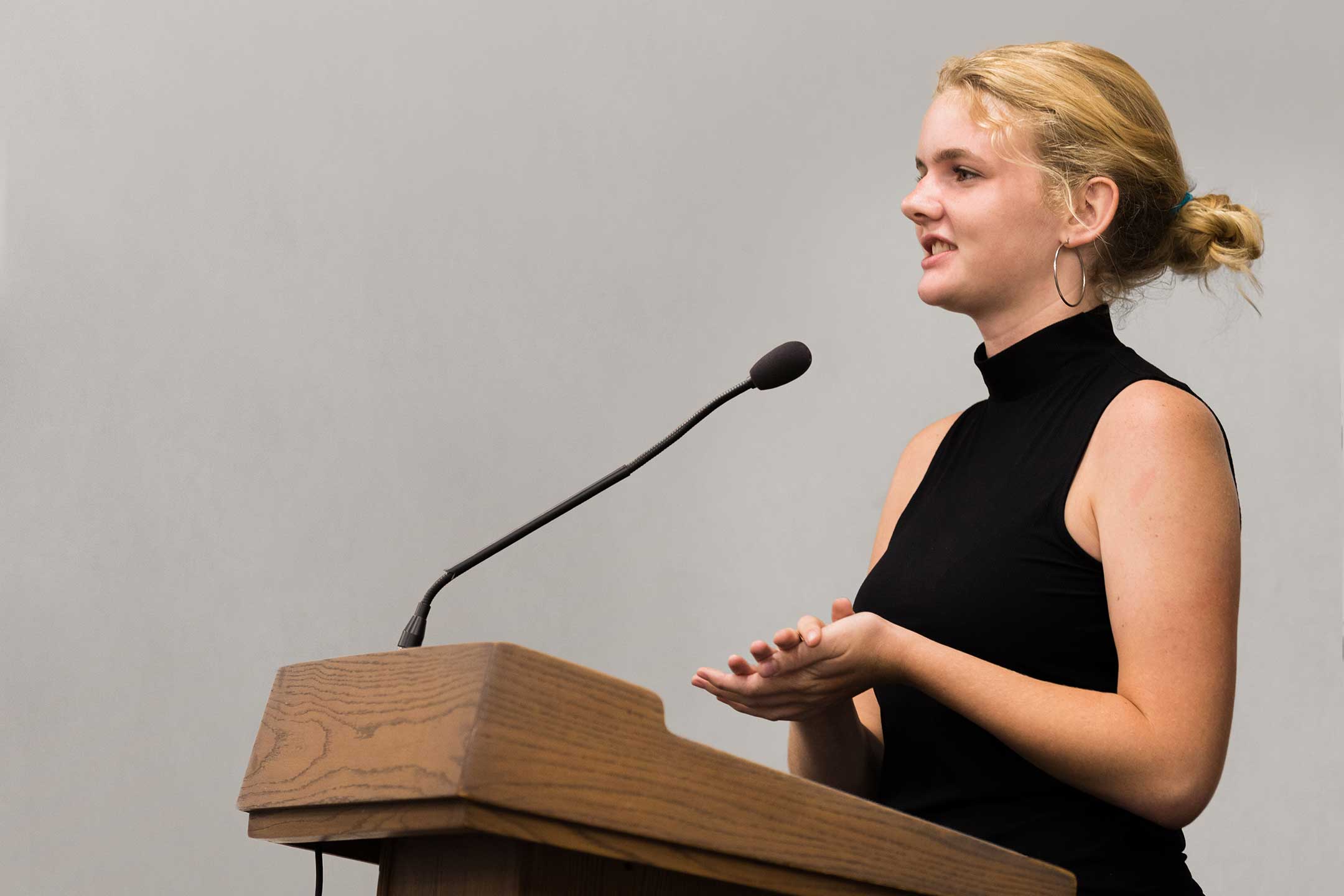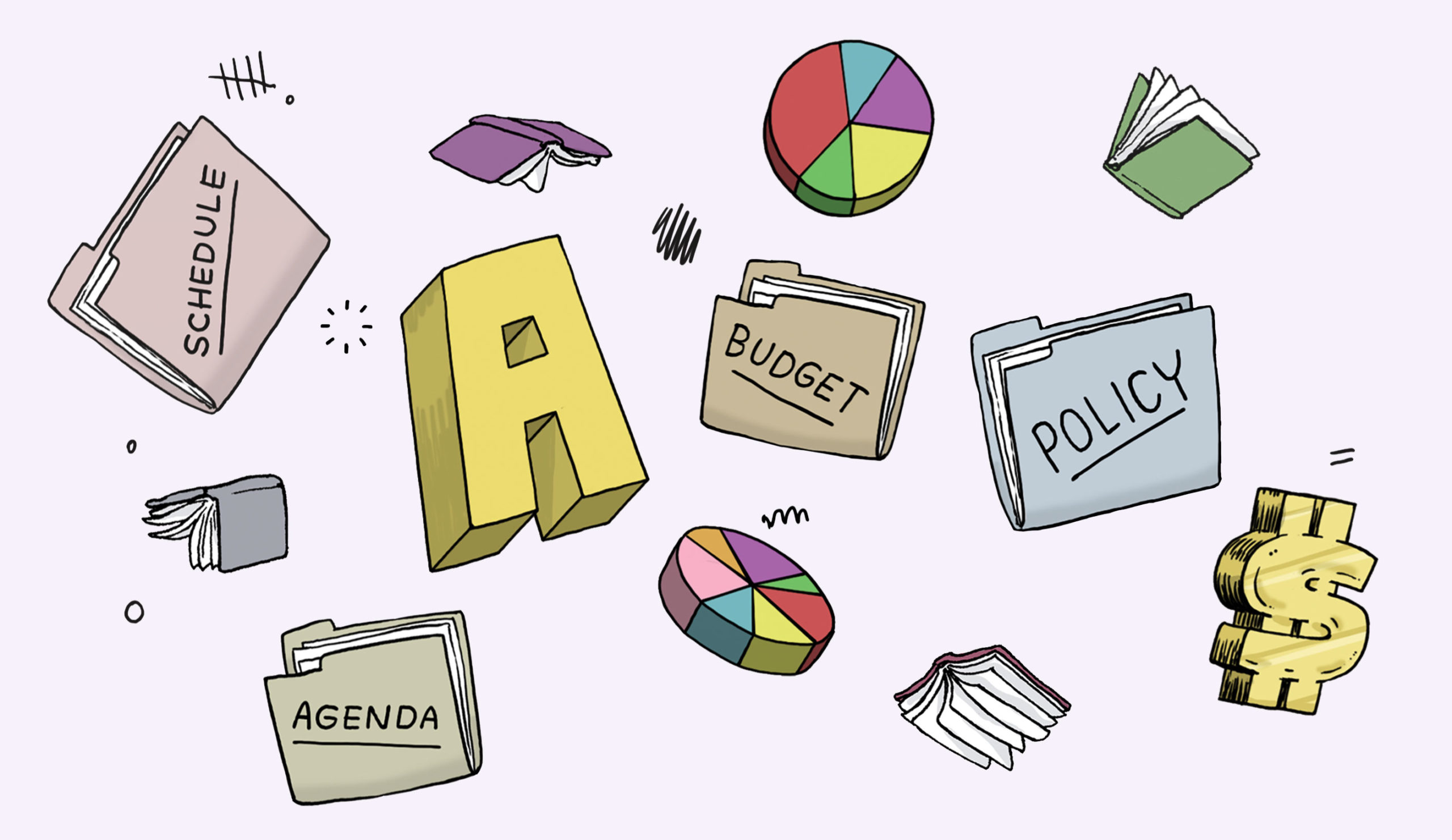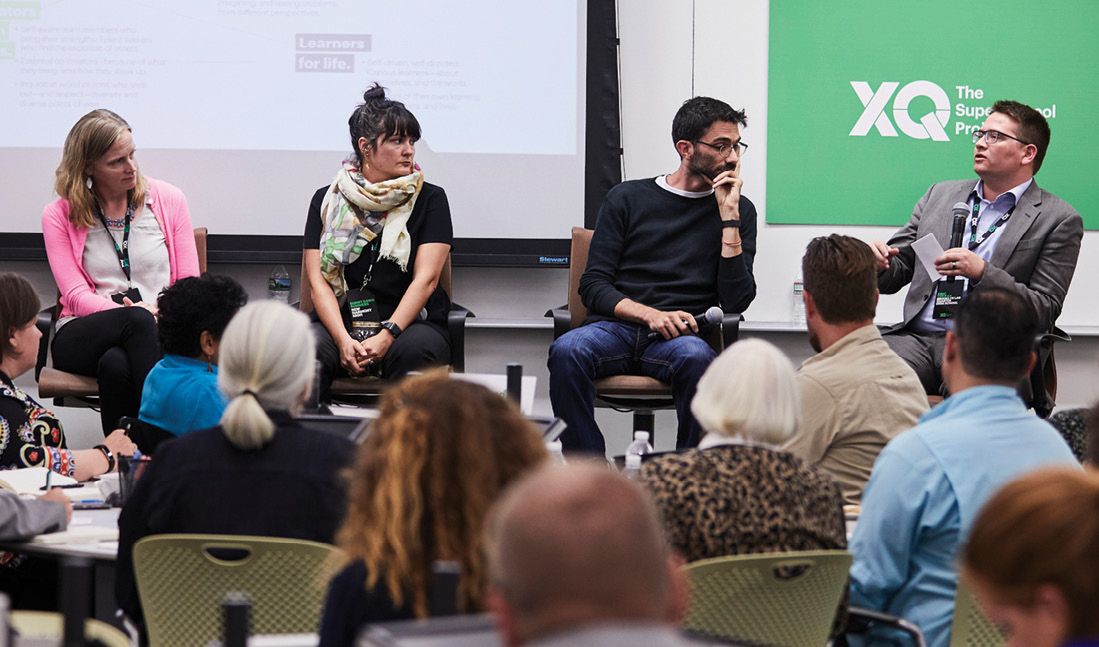HOW TO GET INVOLVED IN MY SCHOOL BOARD
Getting
Started

PARTICIPATE. ACTIVATE. INNOVATE.
If we agree that school boards represent a high-impact but an all-too-often overlooked vehicle for improving high schools in our home communities, the question becomes:
“Well, what are we going to do about it?”
There is no shortage of options and opportunities to engage your local school board. From educating yourself on the state of local high schools to attending meetings, asking questions, and raising urgent priorities…
From learning where candidates stand on improving high schools to voting for worthy candidates…
From campaigning for a candidate, you believe in to even becoming a school board candidate yourself!
Your involvement can be as tailored or as wide as you’re ready to make it.
Whether you’re simply looking to learn more about your local school board or you’re ready to throw your hat into the ring, the biggest step you’ll take is simply getting started.
Let’s take that step together.
Our School Boards, Our Neighbors
School boards comprise everyday, ordinary people taking on an extraordinary challenge. Great school boards are bettered by the diversity in background, ideology, and outlook of their members. They recognize that preparing students for success in college, careers, and life is a shared responsibility that compels community members to listen to—and learn from— one another.
The more we realize school board members are our own neighbors, the more approachable and accessible school boards become.
The bottom line? You don’t need to have a background in education or government to get involved with your local school board or even get elected. Very few school board members do.
What matters most is a genuine commitment to students, a willingness to work hard, and a desire to bring others along. School boards are not elite clubs. They’re not intended for career politicians or aspiring ones. They’re designed to encourage and empower everyday citizens like you to make a difference in your community. And they’re bolstered by your presence and participation.
Inside a School Board Meeting

WHAT HAPPENS DURING A SCHOOL BOARD MEETING?
School boards typically meet once or twice a month on a set weekday. Meetings are open to the public and provide an opportunity for community members like you to learn about what’s happening in your local schools. Most boards post their agendas on their websites, so you can find out in advance what they’re planning to discuss. The website will probably also include short bios of current members.
Every board meeting is different, but there are certain common elements you can expect. The superintendent or school board president will probably give a general update and make announcements about upcoming events. Board members might debate a new discipline policy, consider a new program or review student performance data. They might discuss budget issues or hear a report on a problem that came up at an earlier meeting. The tone might be businesslike, conversational, or confrontational—or a combination of all three.
Protocols vary, but there’s usually an opportunity to ask questions and share your opinions, concerns, and solutions about how to improve the schools in your community. You might need to put your name on a list and wait to be called on to speak. You might be given only a minute or two to ask a question or make a comment. Or you might find that just listening during the public part of the meeting is the best approach.
Remember, the best introduction to your local school board is simply to attend a local school board meeting. You’ll learn a lot—and, equally important, you’ll show your concern. School boards function better when there are more committed people in the room.
NEVER BEEN TO A SCHOOL BOARD MEETING? NO PROBLEM.
YOUR FIRST SCHOOL BOARD MEETING: A CHEATSHEET
Find out when and where your local school board meets by checking the website of your local district. Then put the next meeting on your calendar and show up.
When you arrive at the meeting, note, who's in the room. Does the crowd seem to represent all segments of your community?
When the meeting ends, introduce yourself to board members. Tell them why you're attending and what you'd like to hear discussed at future meetings. Ask for information that can help you learn the issues.
Ask questions during or after the meeting, depending on the Q&A protocol for the public. If the board or superintendent mentions a policy you're not familiar with, don't be afraid to ask for clarification.
Workbook 2.
EVALUATING YOUR DISTRICT: HOW DOES YOUR SCHOOL COMPARE?
Public schools are accountable to the public. Period. But how can we hold school systems accountable if we don’t do our homework? Fortunately, there’s lots of information available to help us understand how well our schools are doing. We have a right to it and a responsibility to use it.
Answer the following questions as you start attending your first school board meetings. Answer them on your own or with a group of friends. Just be sure to answer them with care, thoroughness, and rigor. You owe it to yourself, your community, and local students to get these answers right.
When you understand the data, you’ll have a much clearer picture of your local high schools—where they’re strong, where there’s room for improvement. You’ll ask better questions. And you’ll know where your help is needed most.
To get the answers, consult publicly available data sources such as the ones listed below. If you don’t find everything in one place, keep digging!
BEST SOURCES FOR BASIC DISTRICT AND SCHOOL DATA
YOUR SCHOOL DISTRICT
Take a look to see what information your district makes available to the public. Some districts offer very detailed information about enrollment, spending, and the performance of individual schools, some very little. Dig in and see what you can discover (search “your city name” + “school district”).
YOUR STATE DEPARTMENT OF EDUCATION
Generally, state department of education websites has basic information on every school and school district in the state, including size, graduation rate, test performance, and spending. The best state websites help you compare your schools and district to others in the state and post whether your schools are meeting state goals.
Source: U.S. Department of Education
NATIONAL CENTER FOR EDUCATIONAL STATISTICS
Be sure to check out the School and District Navigator, an accessible tool from the National Center for Educational Statistics. It contains the basics of every school district in America, including numbers of schools, students, and administrators, and teachers, expenditures per student, and more. Just enter the name of your district, and you’ll find the information you need.
GREATSCHOOLS
GreatSchools.org is a national, nonpartisan non-profit organization that gathers a wide range of public data on schools across the country and makes it available, all in one place. Here, you’ll find information about individual school performance, based on objective data like state test results, as well as data about college readiness, equity, advanced placement classes, discipline and attendance, student race/ethnicity and income levels, and other measures. GreatSchools has also begun to share data about the performance of school districts through a new partnership with XQ.
Source: GreatSchools
US EDUCATION DEPARTMENT
The Department of Education’s Office for Civil Rights offers a search tool that provides a wealth of data on school enrollment, discipline, finance, course-taking, and participation in gifted programs. All can be filtered by race and special education status.
Source: Civil Rights Data Collection
PROPUBLICA DATABASE
ProPublica’s interactive Miseducation database lets you search more than 17,000 school districts and 96,000 public and charter schools to explore key data about students’ access to high-quality education. Use it to find and understand patterns of racial inequity and to see how your district stacks up. It’s sourced from data released by the U.S. Department of Education.
Source: ProPublica
DRIVING DATA INTO DISCUSSION
You’ve done your homework. You’re up to date on the facts, percentages, and stats. But how do you turn that information into activity?
When you insert real data into a school board discussion, you’re bound to get attention—and maybe even spur some action. Take the data you’ve found and turn it into questions that open up community conversations about the changes that need to happen in your local high schools.
Look through the questions below and see if one can serve as a jumping-off point for engaging your local school board. Treat these questions as a guide, not a script. And be sure to follow up with a question about the next steps and how to measure meaningful change.

SPEAK UP! QUESTIONS TO ASK YOUR SCHOOL BOARD

"A lot of our students aren't getting the kind of learning they need for college and the modern world. What is the district doing about that?"

"When I talk to local students, they say they're bored in class or just drifting through high school. How can we make learning more engaging?"

"Some of our high schools have much lower grad rates than others. How can we make learning more equitable across the district?"

"Students in a nearby district have cool internships with local businesses. Can we start something like that in our schools?"

"Could our high school students be playing a bigger role in decision-making about the district, their schools, and their own learning?"
And as a follow-up to any of those questions:

"How do we measure that, and what steps are we taking to improve things for students?"
Getting Involved with Your Local School Board

GETTING STARTED: THE POTENTIAL IS LIMITLESS
When you’ve gotten to know your school board and how it operates, met a few school board members and delved into some of the issues facing your district, the question becomes this: How can you contribute to this important work, rather than just observe it?
This is where your own creativity and commitment become real assets. Because if you’ve got those, the potential to make a difference is huge.
Among the possibilities:
Does the school board or the school district have committees you can get involved with?
Can you start, or become part of, a local effort to look into the performance of your high schools and how to improve them? And if your superintendent and school board don’t seem to welcome that kind of input, can you form a committee of people willing to work together to push for change?
Offer to share your expertise in an area like computer science, criminal law, architecture, or entrepreneurship as a guest speaker in a high school class. Or invite the class to visit your business or organization.
Could you organize a mentoring program or student internships or get involved with an initiative that already exists?
Does your high school use volunteer tutors? If your schedule can accommodate it, consider signing up.
The bottom line: There’s no reason you can’t get involved with your local school board, even if you aren’t actually on your local school board. Like any collective, school boards accomplish more when we work together than they ever could on their own.

GET YOUR COMMUNITY INVOLVED
Redesigning high schools to give all students the foundation to succeed in college, career, and life…
Educating young people to become more productive members of society…
Building stronger ties between high schools and the community…
These are common goals every family wants for their kids and every concerned citizen wants for their local high schools. So why not join forces to make a change?
Imagine people in your own community willing to come together to ask deep questions about the purpose of high school and the education students really need for the future, study local high school performance, and figure out ways to improve high schools for every student.
Imagine a group of parents willing to work alongside other community members and business leaders for change.
Imagine a coalition of activists who speak with one voice and are ready to support—or, if necessary, push—the superintendent and school board in researching and implementing innovations that will work in your schools.
Imagine the power of working together for real change.
There are many people in your community who share the same desire to see your local high schools become everything they ought to be, the same commitment to ensuring that every child has an equal opportunity to succeed, the same determination to better equip all students for the real world.
What if you were the person who brought them all together?
GET YOUR COMMUNITY INVOLVED
There are numerous ways to connect with fellow parents, business leaders, and active members of your community. Attend a PTA meeting and announce that you’re starting a study group—one that’s looking to understand the emerging trends in education today.
Start a book club—one that centers on education and how we can make our high schools better. Start a dinner and discussion club—one that brings people together for a worthwhile conversation about the need to redesign our high schools to better prepare students for future success.
Reach out to people on social media, attend neighborhood forums and district town halls to connect with your neighbors. More important, meet with students to listen to their experiences, understand their concerns, and hear their ideas and vision for the future.
Yes, one person can make a difference. By using your time, energy, and voice to form a community coalition for change in your local high schools, you can help make a miracle in your own backyard.
Let’s start by being honest... How well do we think our high schools are really preparing students for college... for careers... for life?
Every community has its challenges. What if part of high school education was addressing them? What could students work on here?
How can we teach skills like problem solving, creativity, critical thinking, and self-discipline?
“Boring.” “Irrelevant.” “Not for me.” Why do so many students seem to feel that way?
If the sky was the limit, how could we redesign high school to better serve today’s students?

SCHOOL BOARD ELECTIONS: BECOME AN EDUCATED VOTER
There’s no wrong time to get involved with your local schools or your local school board. But there’s a time when you can’t afford NOT to be involved: school board election season. It’s the perfect time to become versed in the issues that impact your district, the time when members of the community turn their attention to the future of their schools. And it’s a great time to push high schools higher up on the agenda.
Unfortunately, school board elections often come and go without a lot of people noticing—never mind casting an informed vote for a candidate they believe in. Don’t let that happen to you! Take these steps to become an educated school board voter.
Find out when the next school board election is happening in your district. XQ can help with that: go to https://xqsuperschool.org/school-board and enter your address.
If the election is coming up soon, find out who’s running. You can get that information from your local Board of Elections or school district.
Learn about the candidates. Ask around to see what others are saying. Check their campaign websites for their qualifications and priorities. Are high schools important to them? Who’s endorsing them, and why?
Check for upcoming campaigns or candidates’ forums and attend them. Ask questions about high schools. If you find a candidate you like, introduce yourself and offer your help.
Register and vote!

GET TO KNOW YOUR SCHOOL BOARD CANDIDATES
You’ll learn a lot from seeing candidates in action as they debate the issues and answer questions from families, students, and other residents. Check with your local Board of Elections, League of Women Voters, or Chamber of Commerce for the times and locations of candidates’ forums or other public events. Your school district might also have information about planned events—or check with the mayor’s office or the city council.
If there’s no candidates’ forum scheduled, consider organizing one yourself on behalf of a neighborhood, civic, or parents’ association. Or contact the candidates who interest you most and find out when and where you can meet them in person and ask a few questions. Remember, most candidates are eager to engage with voters and welcome the chance to talk with you.

SPEAK UP! QUESTIONS TO ASK SCHOOL BOARD CANDIDATES
"When it comes to high schools, what is our district getting right? What do we need to work on?"
"What are your three biggest priorities for improving high schools?"
"How will you build partnerships with businesses, colleges, and other organizations?"
"What skills and experiences do you have that will help the district improve our high schools?"
"How can the school board become more accountable for our high schools?"
ENGAGE, ORGANIZE, AND VOTE
Community activism is what America and the democratic process are all about. Getting involved, calling for change, and being part of solution-finding efforts is a privilege—but it’s also a lot of fun. Why not enjoy it? You can push for or organize candidate forums so that you can listen to their ideas and solutions, share your own perspectives, and ask questions. Found a candidate that you believe in? Consider getting involved with the campaign by volunteering in a phone bank or going door-to-door. But the single most important thing you can do is VOTE. A handful of districts even allow high school students to vote in local school board elections.
The Problem of Low Participation in School Board Elections
And you can do something about it in your hometown. Organize a voter registration drive. Encourage your friends and neighbors to vote. If you have time, mobilize or join a get-out-the-vote effort to remind people to vote and transport them to the polls.
MAKING OUR VOICES HEARD
Your vote matters in every election— national, state, and local—but when it comes to school board elections, it’s even more deeply personal. The future of our schools affects the future of our local economies, neighborhoods, environments, and more. Voting is a right, but it only counts if you exercise it.
The truth is that because school board elections don’t always align with national or midterm elections, they tend to be under-promoted and underrepresented at the polls. It’s more than a shame, it’s a disservice. These are our communities. It’s only right that we make our voices heard.
From Active Citizen to School Board Candidate
DECIDING TO RUN FOR SCHOOL BOARD
Feeling inspired? Think about putting your name on the ballot and running for the school board yourself. Although the rules vary a little from state to state, there are some basic qualifications you’ll almost certainly need to meet. In most cases, you must be:
A registered voter
An official resident of the district
A high school graduate
As a school board member, you’ll chart the course of education and set generations of students up for success. Whether your district needs a program to meet the needs of English learners or more advanced courses to make sure all students are prepared for college, you’ll be on the frontlines of decision-making.
If you don’t have children or grandchildren in the school system, it doesn’t mean you should be discouraged from getting involved. That’s because school boards transcend the classroom—they make the community a better place for everyone. Imagine working alongside local employers and business owners to create partnerships that strengthen the local economy and future generations.
As a board member, you’ll be responsible for interacting with parents, the press, and other stakeholders on the issues that matter most to your hometown. That puts you in a unique position to improve public safety, resources for seniors, historical preservation efforts, the local economy, and more.
And remember, you’re not alone. Great school board members across the country are playing a big role in making American high schools great, one community at a time.